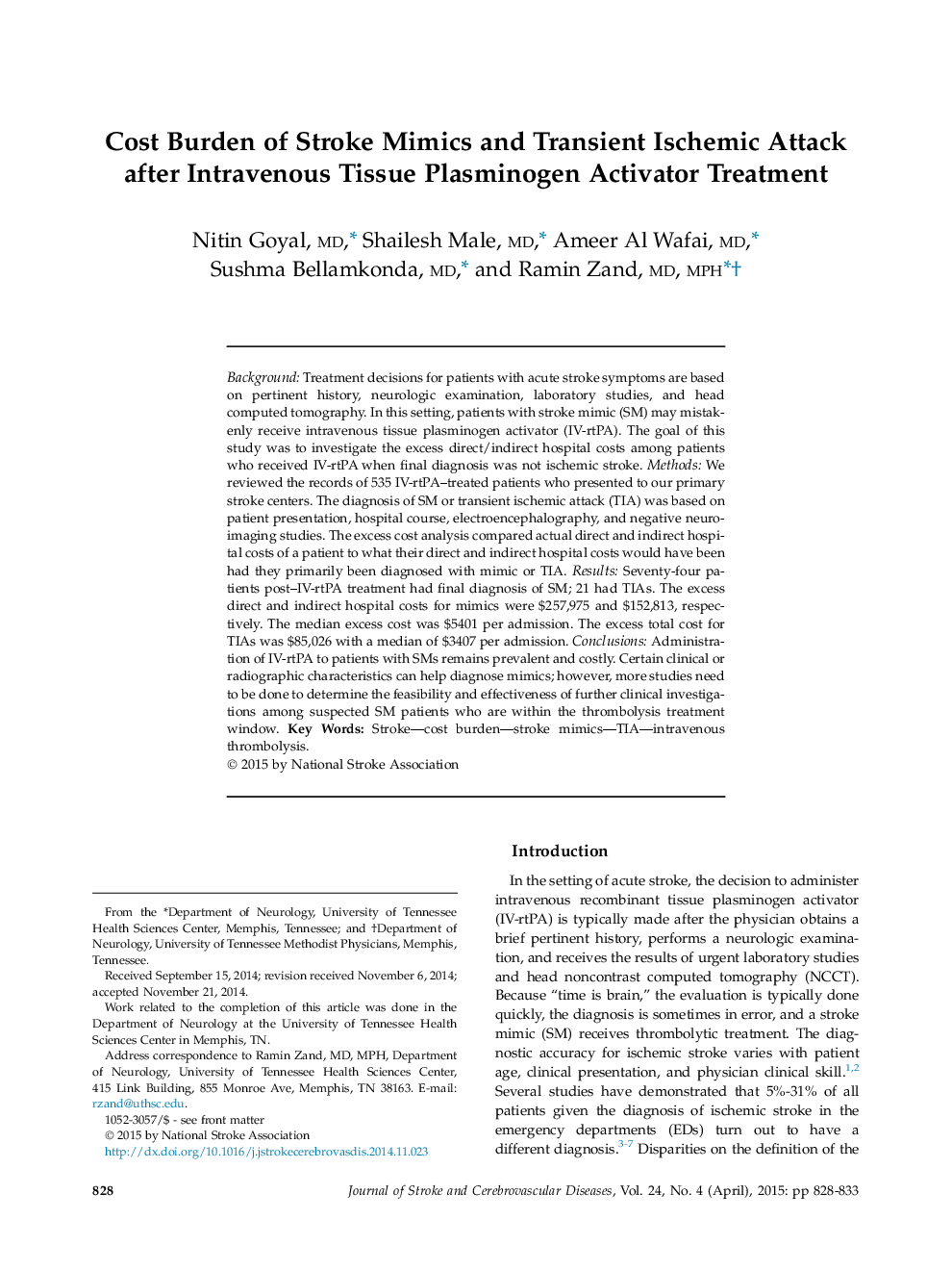| Article ID | Journal | Published Year | Pages | File Type |
|---|---|---|---|---|
| 5873961 | Journal of Stroke and Cerebrovascular Diseases | 2015 | 6 Pages |
BackgroundTreatment decisions for patients with acute stroke symptoms are based on pertinent history, neurologic examination, laboratory studies, and head computed tomography. In this setting, patients with stroke mimic (SM) may mistakenly receive intravenous tissue plasminogen activator (IV-rtPA). The goal of this study was to investigate the excess direct/indirect hospital costs among patients who received IV-rtPA when final diagnosis was not ischemic stroke.MethodsWe reviewed the records of 535 IV-rtPA-treated patients who presented to our primary stroke centers. The diagnosis of SM or transient ischemic attack (TIA) was based on patient presentation, hospital course, electroencephalography, and negative neuroimaging studies. The excess cost analysis compared actual direct and indirect hospital costs of a patient to what their direct and indirect hospital costs would have been had they primarily been diagnosed with mimic or TIA.ResultsSeventy-four patients post-IV-rtPA treatment had final diagnosis of SM; 21 had TIAs. The excess direct and indirect hospital costs for mimics were $257,975 and $152,813, respectively. The median excess cost was $5401 per admission. The excess total cost for TIAs was $85,026 with a median of $3407 per admission.ConclusionsAdministration of IV-rtPA to patients with SMs remains prevalent and costly. Certain clinical or radiographic characteristics can help diagnose mimics; however, more studies need to be done to determine the feasibility and effectiveness of further clinical investigations among suspected SM patients who are within the thrombolysis treatment window.
